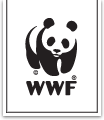
Objectives of the service
The overall objective of the TransparentSea project is to contribute to the sustainable management of fishery resources world-wide by supporting fishery certification issuers, such as the Marine Stewardship Council (MSC) or the International Sustainable Seafood Foundation (ISSF) in enforcing the value and credibility of certified seafood products by creating more transparency of fishery activities at sea using space based technologies.
Together with the MSC and ISSF as “anchor customers” the project aims at establishing a service which is also required by other actors in the sea food supply chain, such as sea food processors and retailers.
The project aims at:
- Using AIS and other space based M2M satellite communication systems combined with GNSS for seamless tracking the certified fishing fleet around the world.
- Exploiting Earth Observation data in combination with fishing vessel track-data to validate the conformity of fisheries activities against science based sustainability measures, benchmarks and standards endorsed for example by MSC or ISSF.
- Develop and maintain a communication platform (internet and smartphone apps) where consumers have access to detailed fishing vessel tracking data, information about the compliance with sustainable fishing practices as well as other essential information about the participating certified fishery and the sea food product purchased.
- Establish as service chain for an operational service and offer the service also to other customers.
Users and their needs
Transparency/traceability of seafood products from “catch to plate” throughout the entire chain of custody is an urgent requirement for all actors along the sea food value chain (fishery – sea food processors – retailers). Today there are measures, even mandatory regulations, in place to ensure product traceability and transparency from the harbour (where the fish was landed) through the processing chain and the trading channels to the end consumer.
However, largely unknown is what happened at sea. Fishing vessels operate most often beyond visible near shore distances and on the high seas/open oceans. These areas are characterised by a relative absence of social or technical monitoring measures and of legal constraints making controls difficult or even impossible. Transparency of fishing activities at seas is thus an important, but currently lacking element for almost all seafood products, although essential with regards to sustainability.
A second element which is far from optimum is to provide information about the sustainability aspect to customers, e.g. to communicate and present this information to consumers.
Today seafood companies, wheatear these are processors or retailers provide only little information available about their fish products regardless whether these are certified or not. And the little information is not very detailed and difficult to access.
Service/ system concept
The high level schematic system architecture of TransparentSea is displayed in the figure below, showing the key building blocks of the system.
Space Added Value
Space based technologies are an enabler for more transparency in the seafood supply chain and their assessment in a global trade flow, particularly for tracing the fishery activities far from shore and on high sea.
- Satellite AIS provides a cost efficient mean to track in near real time certified fishing fleets globally. Most fishery vessels around the world are equipped with an AIS transponder which means that no additional investment is required. In addition to the cost efficiency, the tracking data are easily accessible via SAT-AIS and terrestrial AIS data providers. Thus AIS data will be the main source for tracking fishery vessels.
- Satellite communication: in specific cases where AIS is not required (fishing vessels <300GT) or AIS reception is constraint (high density vessel traffic areas such as the North Sea or the Baltic Sea) an alternative tracking device might be needed. Such systems are M2M satellite communication systems such as Inmarsat, ARGOS, ORBCOMM, Globalstar, Thuraya or IRIDIUM.
- GNSS - satellites: Using GPS and Galileo integrated in Sat-Com devices enable precise tracking of vessels.
- Earth Observation: Wind, sea-state, sea surface temperature or chlorophyll data gathered by EO are valuable sources for analysing fishing activity pattern and to validate the plausibility and the conformity of the catch.
Current Status
The first project phase was concluded. In a current CCN the project services elements are upgraded to meet the requirements for an institutional customer, implemented and demonstrated.




